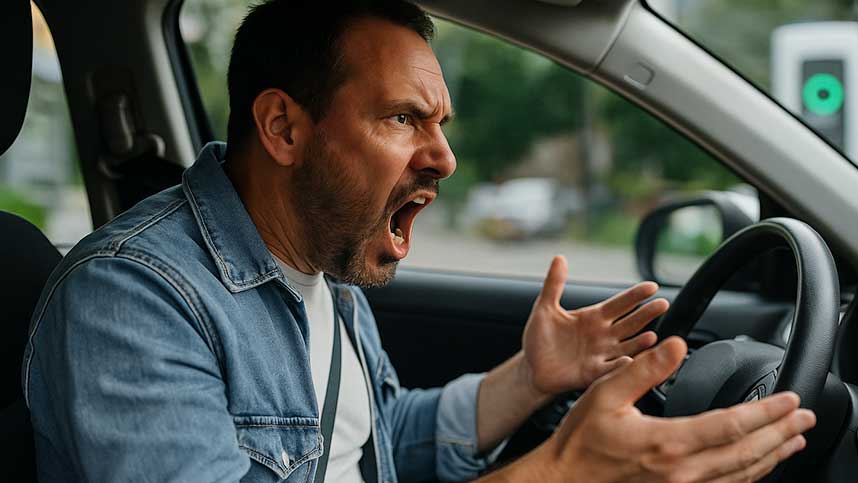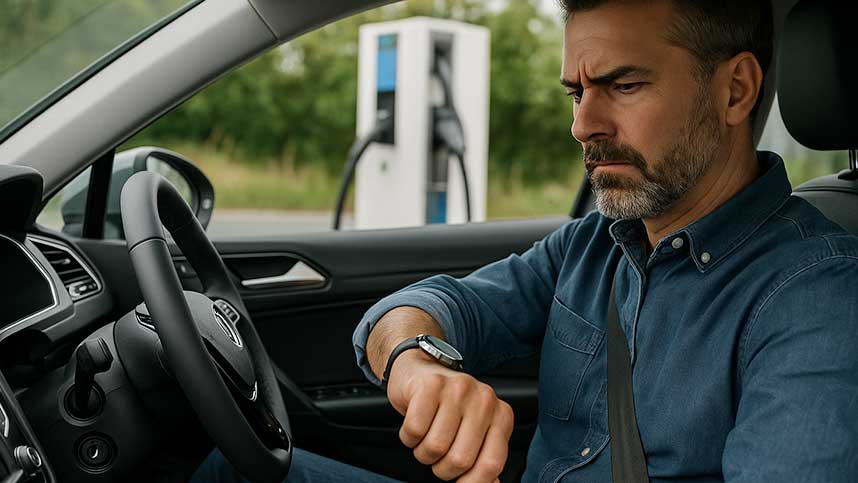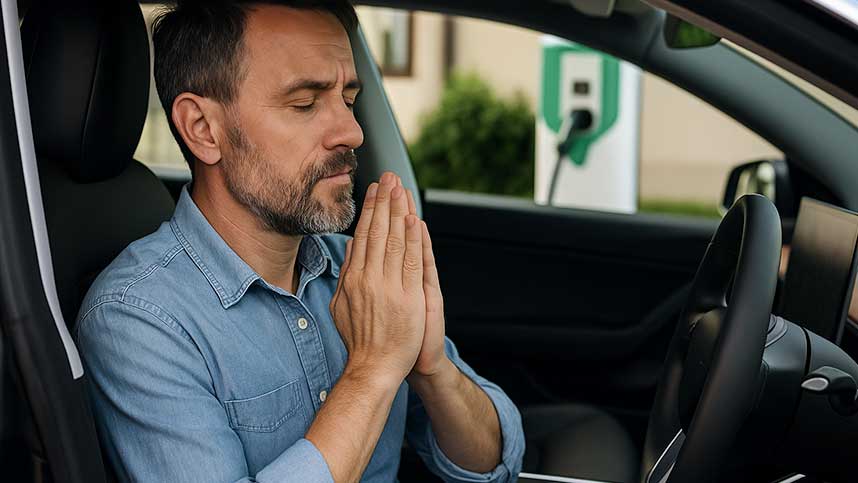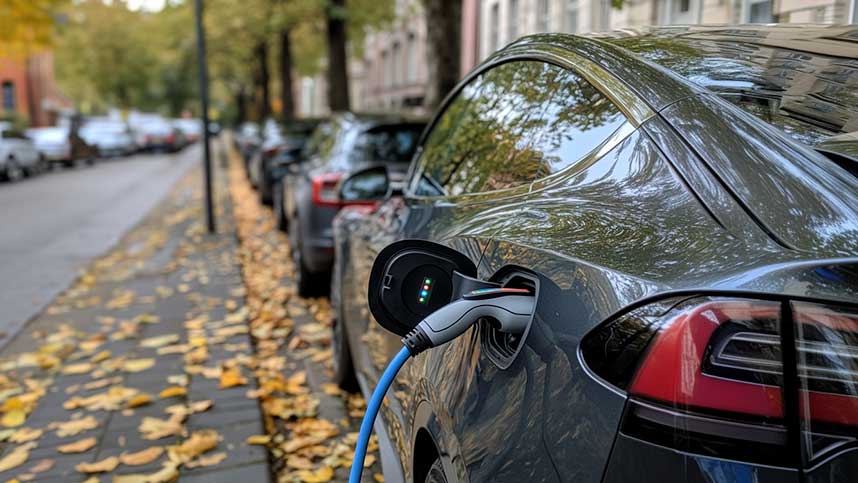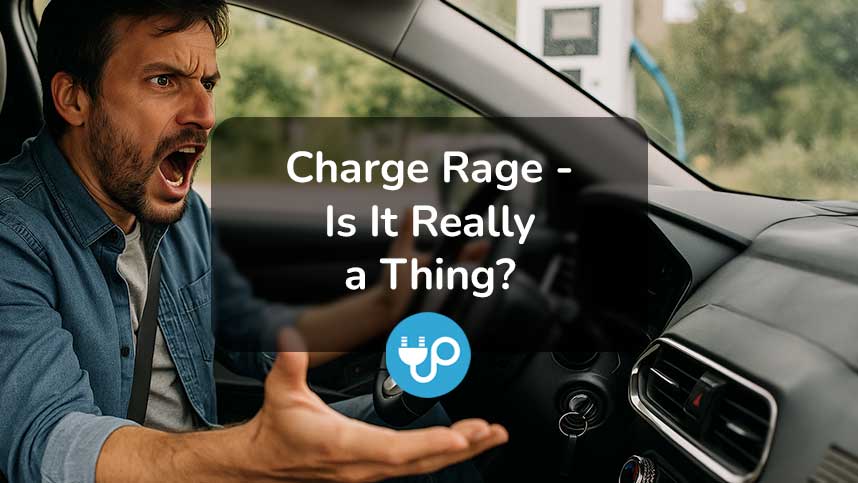
Charge Rage: Is It Really a Thing?
Electric cars are cleaner and often cheaper to run than petrol or diesel vehicles.
But they bring a new challenge: charging takes longer than a quick stop at a petrol pump.
As a result, some EV drivers feel impatient or angry when they have to wait for a charger.
This feeling of frustration has even been nicknamed ‘charge rage’.
In this article we will explain what charge rage is, why it happens, and how EV owners and others can deal with it.
We’ll describe real-life scenes at charging points, the factors that fuel anger, and tips to avoid problems.
The goal is to help readers stay calm and find solutions, even when charging becomes a headache.
We will look at this phenomenon from all angles, so EV drivers can be prepared and courteous, and know how to handle stress if it arises.
Chapters
What is Charge Rage?
Charge rage is not an official term, but it is used by the media and drivers to describe situations where anger or arguments happen at EV charging points.
Think of it as the EV equivalent of road rage, but over charging stations instead of traffic jams.
For example, newspapers and websites have reported fights and heated arguments at UK motorway services where drivers waited hours to charge their cars.
In one case, Britain’s largest motorway service operator had to put volunteer marshals on duty just to help manage queues of drivers at chargers and keep everyone calm.
Charge rage usually involves tensions between drivers who feel they were unfairly kept waiting or blocked out of a charging spot.
Charge rage is essentially a kind of social friction caused by a new kind of vehicle fueling.
For example, during busy holiday periods (Christmas travel, summer holidays) chargers at motorway stops have been so busy that drivers waited up to six hours to charge their EVs.
That level of delay naturally led to stress and even arguments.
Because EV charging times are inherently longer than filling up with fuel, even a small queue or delay can feel very significant.
If one person is hogging a charger, or two drivers have a misunderstanding, it can quickly feel personal.
Just as petrol drivers once got angry when petrol stations ran dry in the past, EV drivers today face frustration when chargers are scarce or slow.
Causes of Charge Rage
Common causes of charge rage include:
Long Waits
An electric car can take 30 minutes to an hour to get a fast (rapid) charge, and even more time to reach 100%.
If two cars share a fast charger unit, charging will be slower for both.
If the weather is very hot or cold, batteries charge more slowly.
Public parking chargers (slower ones) can take several hours to fill a battery.
When drivers expect a quick top-up but instead wait a long time, frustration can build up.
Queue Jumping
Sometimes drivers may see an empty charger but not realise it belongs to someone waiting.
If one driver takes a spot out of turn, others may feel angry.
Without clear queue etiquette or signage, confusion can lead to arguments.
Hogging Chargers
A common problem is a driver leaving a car plugged in and sitting idle after the car is fully charged.
In some busy locations, this can cause serious conflict.
Other drivers might feel they are being blocked from charging when someone has finished but hasn’t moved their car.
Petrol Station Expectations
In a petrol station, filling up a tank takes minutes.
Many people expect charging to be similar, and they get impatient when it isn’t.
Watching your car battery creep up slowly can feel frustrating, especially if you are anxious to continue a journey.
ICE Car in an EV Spot
An unrelated issue that sparks charge rage is when a petrol or diesel car parks in a charging bay without plugging in.
This leaves EV drivers fuming because a charging space is wasted.
Is Charge Rage Common?
Even though we hear about it in the media, charge rage is not an everyday occurrence for most EV drivers.
For every story of an argument at a charger, there are thousands of calm and polite charging sessions that happen without incident.
The news reports tend to highlight the worst cases, which can make it seem like it happens all the time.
In reality, many EV owners report that charging is usually fine, especially if you plan carefully.
That said, charge rage is definitely a known problem, especially in hotspots and at peak times.
Reports show that many EV owners are concerned about the availability of chargers, particularly in winter or during holidays.
For example, one study found that nearly half of UK drivers see lack of chargers as a barrier to buying an EV.
When chargers are in short supply, tempers can flare.
However, in practice, charge rage incidents are still relatively rare compared to the total number of charging sessions.
As of June 2025, there were around 37,000 public charging points across the UK.
Every day many thousands of EV owners plug in without a problem.
When they work smoothly, most drivers just tap and go or come back in an hour with a charged car.
However, if you try to charge when a station is busy, or if there’s a shortage in your area, the chances of trouble go up.
Some areas or times are worse.
Holiday weekends like Christmas or summer holidays see a spike in travel and many EVs on the road, but the same charging network tries to cope.
So in busy times and places, charge rage is more common.
How Can Charge Rage be Remedied?
There are two main ways to reduce charge rage: improve the system and improve driver behaviour.
Improving Infrastructure
The root cause of many charging arguments is simply not enough chargers or power to go around.
Governments and companies are already expanding the network.
By 2030, the government aims for around 300,000 public chargers across the country (up from tens of thousands now).
Major fuel companies, supermarkets, petrol station chains, and new startups are installing more and faster chargers all the time.
More Chargers and Faster Chargers
More charging bays at service stations and shopping centres mean shorter queues.
Ultra-rapid chargers (providing 150kW and above) can add up to 200 miles of range in 15–20 minutes on a capable car, which reduces how long it takes to charge an electric car.
More medium and slow speed chargers also help by serving cars that don’t need a superfast top-up.
Upgrading the Power Grid
One big barrier has been the electricity grid connection.
Motorway operators have wanted to add chargers but hit a limit on how much power is available.
They even proposed building dedicated solar farms to boost capacity.
The good news is that more grid investment is happening, and there are plans for battery storage at stations so that multiple cars can charge quickly without tripping breakers.
Spreading Chargers Geographically
Some regions have fewer chargers per EV than others.
Charging always feels worse if you live somewhere with too few points nearby, which can lead to charge rage.
Government funding and private investment are targeting ‘cold spots’ in parts of the country.
For instance, schemes now encourage councils or housing associations to fit lamppost chargers on residential streets, and companies are rolling out rural chargers.
As chargers become more evenly spread, drivers won’t have to drive far or queue as much.
Clear Parking Enforcement
Many places now have rules about EV bays.
Some charging networks use number-plate recognition to enforce the rules: if a car overstays or is not plugged in, the owner may get a parking ticket or penalty.
This discourages people from parking without plugging in, or hogging spots after charging.
In some cases, retailers or councils clamp or tow offenders.
Enforcing the rules helps ensure chargers are used properly.
Improving Driver Behaviour
Even with better infrastructure, respectful use of chargers is crucial.
Drivers can do a lot to avoid conflicts.
Here are some key etiquette and planning tips to prevent charge rage:
Plan Your Charge Times
If possible, charge your EV at home or work where you have a dedicated charger, so you only need public stations for long trips.
This should also help with range anxiety.
If you do need to use public chargers, try to avoid busy times.
If you know Christmas or summer travel is busy, consider charging before you reach the station or stop at off-peak hours.
Using charging apps, such as JoosUp, or websites (like maps that show availability in real time) can help you choose a location that isn’t overcrowded.
Use the Right Charger
Match your car to the charger.
If you have a car that only charges at up to 50kW, there’s no benefit in blocking a 150kW charger – use a slower one and leave the fast chargers for cars that need them.
Conversely, if you’re in a rush, use an ultra-rapid charger.
Some drivers misunderstand the technology and plug a slow car into a charger that’s too fast for it, tying it up unnecessarily.
Try to select a charging port that fits your needs.
Mind the Queue
If someone is already charging, check if there are others waiting.
It’s polite to let drivers who have been waiting longer go first.
When you arrive, park only if you intend to plug in.
Avoid claiming a spot to reserve it for later, either charge or leave the space.
Don’t Overstay Your Time
Once your car is charged, move it.
In many fast-charging systems, the charging rate slows down above 80%.
If your battery is almost full, consider stopping even if you only got 80% – that usually gives enough range for the next leg.
Lingering at 100% will add only a few miles but can block the charger for an hour or more.
Many charging networks now charge extra fees if you stay connected after charging stops – Tesla, for example, charges an idle fee per minute on their Supercharger network.
These fees are meant to discourage staying in the slot.
Being mindful of others and freeing the spot when you’re done is good etiquette.
What to do if Charge Rage Happens to You
Sometimes, despite all precautions, a charging dispute or frustration may happen.
If you find yourself in a tense situation at a charger, here are some friendly tips to handle it calmly:
Stay Calm
First, remind yourself that feeling annoyed is normal but getting angry won’t solve anything.
Take a moment to breathe.
If another driver is upset, they are probably stressed too – maybe about running late or their battery level.
Staying polite and calm can defuse the situation.
Assess the Situation
Try to figure out the issue.
Are they upset because your car is still plugged in and fully charged, knowing you should charge to 80%, over 90% or 100%?
Or are you waiting behind someone who is taking ages?
Understanding the problem helps solve it.
Sometimes just a quick friendly chat can clear things up.
Move on If Needed
If things are getting heated, it’s often best to withdraw temporarily.
Let the other person cool off and find another charger.
Many stations have multiple chargers, see if you can plug in at a different one.
Walking away for a coffee or a short break (charging takes a few minutes anyway to start) can help both of you calm down.
Call for Help
If someone is being abusive or dangerous, do not hesitate to seek help.
Some charging locations have on-site staff or security, so let them know what’s happening.
In extreme cases (which are very rare), don’t be afraid to call the emergency services.
Personal safety is more important than charging your car.
Learn from It
Afterward, think about what triggered the incident and how to avoid it next time.
Did you arrive without enough battery?
Maybe next time try to start charging earlier.
Did you leave your car too long?
Set a timer on your phone next time.
Use each experience as a lesson.
Will Charge Rage Get Worse in the Future?
Electric vehicles are becoming more popular every year.
In the UK, EV sales have been growing rapidly.
Government targets now say that by 2030 around 80% of new cars sold should be zero-emission (either pure electric or plug-in hybrids) – a huge increase from today.
That means many more drivers needing to charge their cars, possibly at the same places and times.
If charging infrastructure and planning do not keep pace, there is a real risk that charge rage could become a bigger problem.
Imagine all those extra cars trying to use the same number of chargers, queues and waits would get longer.
During busy times, the frustration could easily rise.
Some industry leaders have warned exactly this: that without guaranteed grid power and more chargers, peak travel days might feel like the old petrol crises.
What Can Be Done?
However, there are strong efforts to prevent this from happening.
Significant investments are being made in charging networks.
By August 2025, forecasts suggest the UK may have over 100,000 charging points.
Large companies (like fuel retailers BP and Shell, and tech firms like Tesla and Gridserve) are rapidly rolling out ultra-fast chargers across motorways and city centres.
Governments and regulators are streamlining planning rules, so it is quicker to build new charger sites.
The grid is also getting smarter: more renewable energy, battery storage, and upgraded cables will allow more cars to charge simultaneously.
At the same time, cars themselves are getting better.
New EVs have larger batteries and can charge more efficiently, meaning a fully charged electric car can last longer and is quicker to charge.
Some future models may even have swappable batteries or other novel solutions.
The system is improving from both ends – more supply of charging and less frequent demand per vehicle.
A Positive Outlook
So will charge rage get worse?
Possibly for a little while if EV numbers surge faster than chargers.
But there is plenty of momentum behind fixing the bottleneck.
If authorities and businesses accelerate their plans, those days of waiting hours could become rare holiday memories.
In fact, as more people share stories about charge rage, it puts pressure on planners to act quickly.
Social awareness is already pushing workplaces to install chargers, stores to add bays, and town halls to support on-street charging.
Conclusion
You should now have more of an understanding of charge rage.
Charge rage is a growing pain of the electric car revolution.
However, it’s something we can manage.
By understanding why charge rage occurs, long waits, scarce chargers, or poor etiquette, drivers can take steps to avoid it.
Planning ahead, being courteous at charging points, and supporting efforts to expand the charging network will keep the roads friendlier.
With the industry expanding charging stations and drivers learning good habits, future EV journeys should become smoother.
After all, a friendly smile at the charging point might be the best ‘charge’ of energy you can ask for.
For more information, or help renting out or finding an EV charger, get in contact with us here at JoosUp today.
Blog Archive
- What is a CT Clamp and Does My Charger Need One?
- Is Using an EV Granny Charger Safe?
- Charge Rage: Is It Really a Thing?
- Vehicle to Load (V2L): What It Is & How It Works
- 16 Top Charge Point Operators in the UK
- 8 Types of EV Battery Explained
- Where Can I Charge My Electric Car?
- Electric Car Maintenance and Servicing Guide
- How Often Should I Charge My Electric Car?
- How to Check EV Battery Health
- Do Electric Cars Pay Road Tax?
- October 2024 Budget: Key EV News
- EV vs ICE – Which is Best?
- Should I Charge My EV to 80 or 90 or 100%?
- UK Government Announces Hybrid Sales Allowed Until 2035
- BEV vs PHEV – What’s the Difference?
- Definitely Not A Guru (Jim Starling) Reviews Joosup
- How Long Do Electric Car Batteries Last?
- 25 New Electric Car Brands on UK Roads
- General Election 2024: Major Party Net Zero Policies Compared

